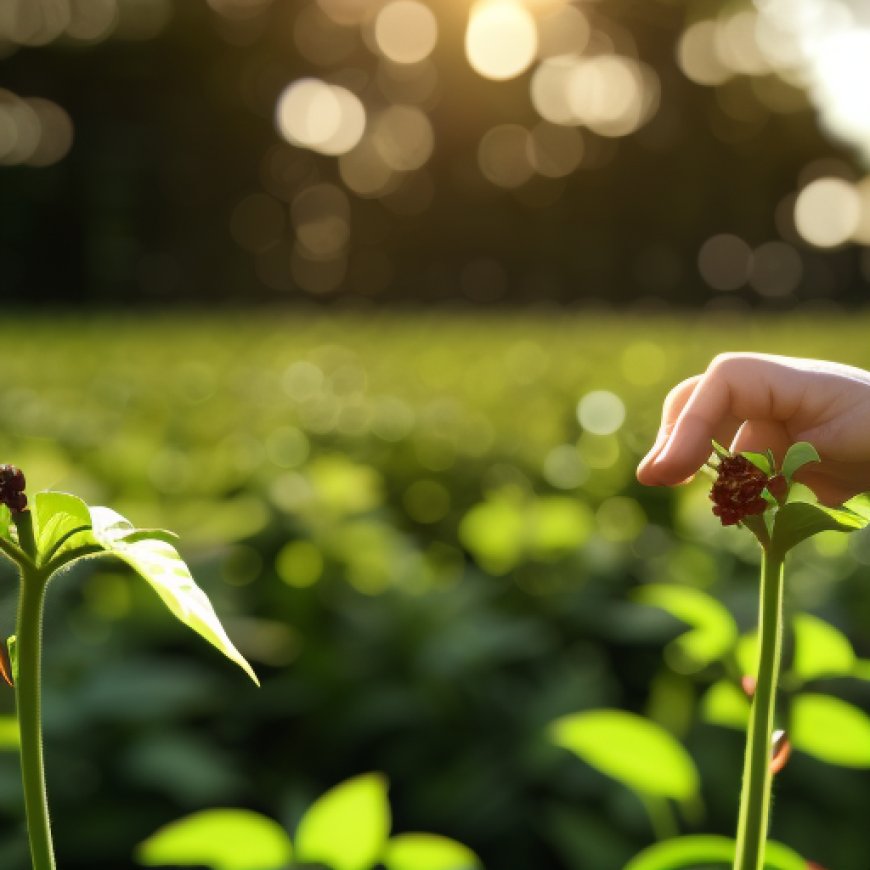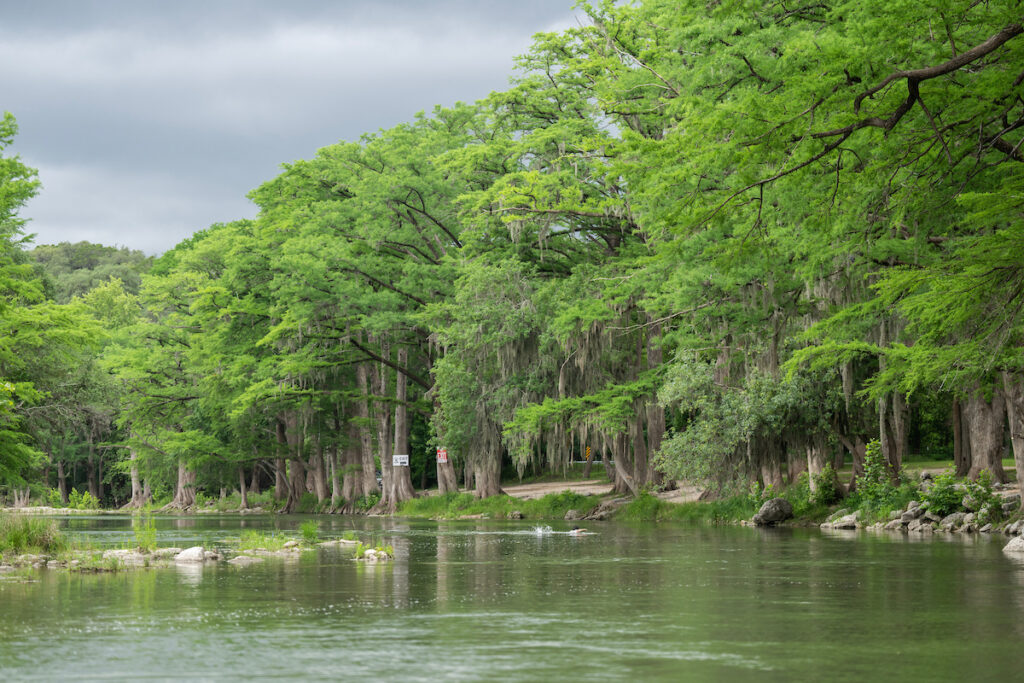Webinar on emerging opportunities in ecosystem goods and services set Aug. 3 – AgriLife Today
Webinar on emerging opportunities in ecosystem goods and ... AgriLife Today


Ecosystem Goods and Services: What Lies Behind the Curtain?
The Texas A&M AgriLife Extension Service will present the webinar “Ecosystem Goods and Services: What Lies Behind the Curtain?” on Aug. 3 from noon to 1 p.m. The webinar will discuss opportunities for natural resources management in emerging markets in Texas and beyond.


The webinar is part of the ongoing Department of Rangeland, Wildlife and Fisheries Management, RWFM, Stewardship Series.
The cost is $35, and advance registration is required at https://tx.ag/RWFMStewardshipWebinars.
After payment is received, a follow-up email will be sent from the event organizer with instructions on how to access the webinar.
Old resources, new markets and opportunities for ecosystem goods
Ecosystem services are the direct or indirect contributions of the natural environment to human well-being. Examples include carbon sequestration, erosion control, clean air and water, among others.
“The benefits our natural resources provide as a whole have been around since the dawn of time, but new markets and opportunities for landowners to harness these resources are emerging,” said Morgan Treadwell, Ph.D., AgriLife Extension range specialist, San Angelo. Treadwell is a series co-creator, along with Brittany Chesser, AgriLife Extension aquatic vegetation program specialist, Bryan-College Station.
“Understanding how nature’s benefits can create new opportunities for natural resources management is key,” Treadwell said.
The featured speaker for August is Bill Fox, Ph.D., director of the Texas A&M AgriLife Center for Natural Resource Information Technology. Fox will be covering the following topics surrounding ecosystems goods and services:
- Understanding conversations around carbon, water and biodiversity.
- Emerging markets.
- Financial benefits for landowners/managers.
- Benefits for communities and society.
-30-
SDGs, Targets, and Indicators
| SDGs | Targets | Indicators |
|---|---|---|
| SDG 15: Life on Land | Target 15.1: By 2020, ensure the conservation, restoration, and sustainable use of terrestrial and inland freshwater ecosystems and their services, in particular forests, wetlands, mountains, and drylands, in line with obligations under international agreements. | Indicator not mentioned in the article. |
| SDG 8: Decent Work and Economic Growth | Target 8.4: Improve progressively, through 2030, global resource efficiency in consumption and production and endeavor to decouple economic growth from environmental degradation. | Indicator not mentioned in the article. |
| SDG 6: Clean Water and Sanitation | Target 6.6: By 2020, protect and restore water-related ecosystems, including mountains, forests, wetlands, rivers, aquifers, and lakes. | Indicator not mentioned in the article. |
1. Which SDGs are addressed or connected to the issues highlighted in the article?
SDG 15: Life on Land
The article discusses opportunities for natural resources management in emerging markets. This is directly connected to SDG 15, which focuses on the conservation and sustainable use of terrestrial ecosystems. The article highlights the benefits of ecosystem goods and services, such as carbon sequestration and erosion control, which are essential for maintaining life on land.
SDG 8: Decent Work and Economic Growth
The article mentions the financial benefits for landowners and managers that can arise from harnessing natural resources. This aligns with SDG 8, which aims to promote sustained, inclusive, and sustainable economic growth, full and productive employment, and decent work for all.
SDG 6: Clean Water and Sanitation
Although not explicitly mentioned in the article, the protection and restoration of water-related ecosystems, such as rivers and wetlands, are crucial for ensuring clean water and sanitation. This relates to SDG 6, which focuses on ensuring the availability and sustainable management of water and sanitation for all.
2. What specific targets under those SDGs can be identified based on the article’s content?
Target 15.1: By 2020, ensure the conservation, restoration, and sustainable use of terrestrial and inland freshwater ecosystems and their services, in particular forests, wetlands, mountains, and drylands, in line with obligations under international agreements.
The article emphasizes the importance of understanding nature’s benefits and how they can create new opportunities for natural resources management. This aligns with the target of conserving, restoring, and sustainably using terrestrial and inland freshwater ecosystems, including forests and wetlands.
Target 8.4: Improve progressively, through 2030, global resource efficiency in consumption and production and endeavor to decouple economic growth from environmental degradation.
The article mentions the financial benefits that can arise from harnessing natural resources. This relates to the target of improving resource efficiency in consumption and production and striving to decouple economic growth from environmental degradation.
Target 6.6: By 2020, protect and restore water-related ecosystems, including mountains, forests, wetlands, rivers, aquifers, and lakes.
Although not explicitly mentioned in the article, the protection and restoration of water-related ecosystems are essential for ensuring clean water and sanitation. This aligns with the target of protecting and restoring water-related ecosystems, including rivers and wetlands.
3. Are there any indicators mentioned or implied in the article that can be used to measure progress towards the identified targets?
The article does not mention any specific indicators that can be used to measure progress towards the identified targets. However, indicators such as the extent of forest cover, wetland area, and water quality could be relevant for measuring progress towards the conservation, restoration, and sustainable use of terrestrial and inland freshwater ecosystems.
SDGs, Targets, and Indicators
| SDGs | Targets | Indicators |
|---|---|---|
| SDG 15: Life on Land | Target 15.1: By 2020, ensure the conservation, restoration, and sustainable use of terrestrial and inland freshwater ecosystems and their services, in particular forests, wetlands, mountains, and drylands, in line with obligations under international agreements. | Indicator not mentioned in the article. |
| SDG 8: Decent Work and Economic Growth | Target 8.4: Improve progressively, through 2030, global resource efficiency in consumption and production and endeavor to decouple economic growth from environmental degradation. | Indicator not mentioned in the article. |
| SDG 6: Clean Water and Sanitation | Target 6.6: By 2020, protect and restore water-related ecosystems, including mountains, forests, wetlands, rivers, aquifers, and lakes. | Indicator not mentioned in the article. |
Behold! This splendid article springs forth from the wellspring of knowledge, shaped by a wondrous proprietary AI technology that delved into a vast ocean of data, illuminating the path towards the Sustainable Development Goals. Remember that all rights are reserved by SDG Investors LLC, empowering us to champion progress together.
Source: agrilifetoday.tamu.edu

Join us, as fellow seekers of change, on a transformative journey at https://sdgtalks.ai/welcome, where you can become a member and actively contribute to shaping a brighter future.







